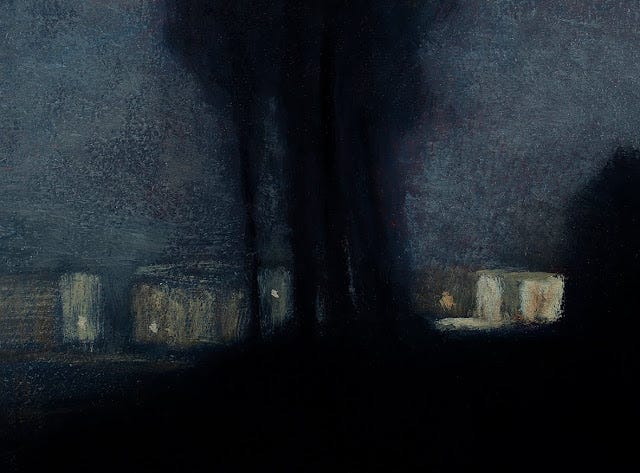We believe in one God,
the Father, the Almighty,
maker of heaven and earth,
of all that is, seen and unseen.
Nicene Creed
The history of metaphysics is the history of essence’s relation to appearance; of content’s relation to form. Notably, much of philosophy has been an attempt to “break through”, or sidestep appearance. In large part, the objective has been to gauge the essence of the thing beyond how it exists for us…
In his Science of Logic, Hegel asserts, naturally, that “[t]he truth of being is essence.”1 This observation, out of context, seems to articulate something that had been supposed in nearly all of Western philosophy until that point: that essence is the Truth of some thing’s being. Conversely, Hegel at this moment is not concerned with determinate being, but with being as such: “Being is the immediate.”2 Being is the entirely unarticulated starting-point that comes to articulate itself by “interiorizing” itself through the External (that it generates). In other words, being can only translate into essence—can only be determined as essence—when it presents itself to itself by positing itself as limited by an external limit. In tarrying with the negative—with the not, or with the limit—being deposits essence as being for another.
This leads us to another of Hegel’s catechisms: “Essence must appear.”3 Building upon this, one could say that appearance is the truth of essence. As has been established, the being of essence is contingent on being’s interiorization over against its posited, negative other (which manifests as abstraction). It expunges and alienates its negation into the External, transforming its implicit internal negation into an external negation that then comes to define the form of essence. Essence is a moment of existence that has released from itself the inessential. It is existence that exists over against its external negation—a negation which really is internal to its being insofar as its other (the inessential) is its self-alienated form which retroactively determines essence as form. In this sense, essence interiorizes in an absolute manner, rendering it unarticulated. “[I]t holds [the determinacies] in itself but without their being posited in it”4, rendering essence an essential moment of existence without existence. Again, however, these determinate moments are subjected to the faculty of the understanding (immanent to their concept) and are exteriorized into an external moment through which essence can move in order to retroactively determine itself as essence.
Essence is a self-moving moment of negation that swallows its other and excretes it as the inessential. Or, rather, it is negation negating itself; determination determining itself. It reflects into itself the essentialities of its essential existence and puts its formalizing moment outside of itself, thus formalizing itself. Essence is thus fixed and articulated through another. It is “quilted” through another moment of existence and is apprehended in its difference. Essence is distinguished as essence through and over against its formalizing other: the inessential. The inessential, in its rendering of form unto essence, appears as the form of essence. Furthermore, the differentiation of determinate moments requires that determinate moments appear to one another. A moment must have a form in order to be rendered distinct from its other, otherwise its existence would collapse into immediacy and finitude would succumb to the infinitude of the void.
Essence, then, must appear. Moreover, essence must appear to appearance. If it is to distinguish itself from its formal other it must appear to to it; it must appear to that which essence has removed from itself, and that which has no content other than its being as the formal appearance of essence. On the other hand, for appearance to be distinguished from essence—in order to determine itself over against essence—it posits a substratum immanent to itself. In other words, for appearance to differentiate itself from essence, it is isolating something of itself; it is interiorizing and isolating that which is essential, positing its inessentiality in its other: essence. Essence distinguishes itself from itself through its other—appearance—but, at the same time, appearance distinguishes itself through its other—essence. Essence is the essence of appearance and appearance is the appearance of essence. Essence is appearance, and vice versa. They are, at this level of abstraction, one and the same. In their mutual negation they discover themselves to be one another, and it is only on the basis of this concrete unity that any distinction between the two can be posited; that we can conceive of a gap between essence and appearance.
The attempt to rid essence of its appearance appears, truly, as the attempt to rid essence of its being as essence. In the canceling of form, we are left with nothing but the dissolution of all things into the darkness of the night.
Georg Hegel, The Science of Logic. p. 337.
Ibid.
Ibid. p. 418.
Ibid. p. 338.

